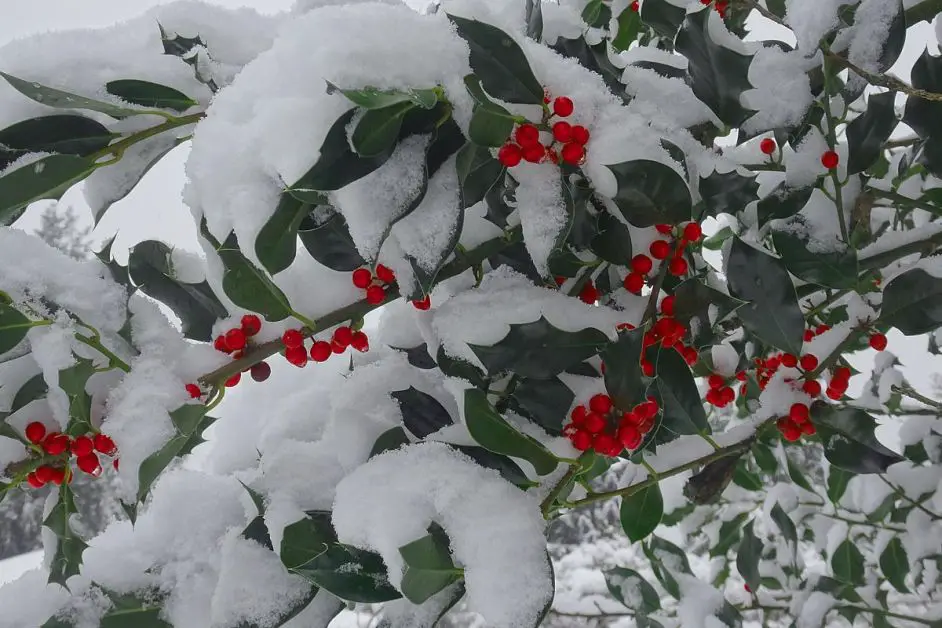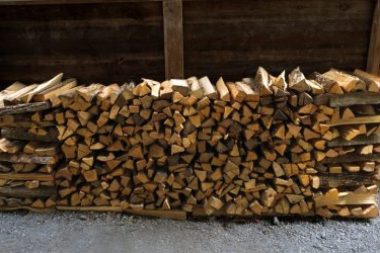In the excitement of the end-of-year festivities, a green and spiky plant makes its way into our homes: the holly. Beyond its decorative aspect, this amazing plant has become the essential symbol of happiness at Christmas. We’ll explain why.
Table of Contents
Contents
Holly and Christmas traditions
Holly and Christmas have a long history that dates back several centuries and has its roots in various traditions and beliefs.

First of all, holly is an evergreen plant. That means it keeps its green leaves throughout the winter.
This characteristic is often associated with eternal life and the promise of renewal, thus marking the feeling of happiness and hope during the Christmas period.
Its shiny, spiky, and glossy green leaves present a striking contrast with the bright red of its berries. Two festive colors that have become emblematic of Christmas celebrations, symbolizing joy and celebration.
In Christian tradition, the holly’s thorns are reminiscent of the crown of thorns worn by Jesus, and the red berries, his blood.
Before being associated with Christian celebrations, holly had symbolic meanings in various pagan cultures. Some believed that holly had protective powers, repelling evil spirits.
When to plant holly? In the month of December!
Did you know? Only the female holly bears fruit. To be sure to get a subject covered in berries, you will need to plant both male and female.

The ideal period for planting holly is the month of December, when the berries can be distinguished and therefore the female plants. Holly likes acidic and light soils but can tolerate slightly chalky soils.
Holly berries are toxic, except for birds!
Holly berries are toxic if ingested because they contain chemicals, including saponins and ilexins, which can cause symptoms such as stomach pain, vomiting, and diarrhea.
Although holly berries are attractive due to their bright color, it is important to keep them out of reach of children and pets.

Toxic, but not for everyone. Many birds such as blackbirds, thrushes, starlings, and sparrows consume holly berries.
These little red balls represent an important food source for several bird species, especially during the winter months when food becomes scarce.
In fact, some birds are able to tolerate the toxic compounds present in holly berries without experiencing the negative effects observed in humans or pets.
Holly Plant Culture Sheet |
|
| Family | Aquifoliaceae |
| Characteristics | plant with decorative, glossy, and spiny foliage that produces small red fruits in winter. |
| Foliage | variegated, evergreen. |
| Flowering | non-flowering. |
| Dimensions | 6 m wide, 6 m tall. |
| Cultivation | It makes beautiful defensive hedges. |
| Planting Period | outside of frost periods. |
| Soil | rich, humus-rich, slightly acidic. |
| Exposure | sunny, semi-shade. |
| Spacing | 1 m between each plant to obtain a dense hedge. |
| Implementation | Soak the root ball before planting. Dig a hole and fill the bottom with surface soil mixed with compost. Place the plant after carefully removing the burlap, wire mesh, or pot that surrounds it. Backfill the hole without burying the crown. Firmly tamp down and water thoroughly. |
| Care | variegated varieties are sensitive to cold. |
| Watering | regularly in the first year of planting, then in case of drought. |
| Fertilizer | slow-release fertilizer after a few years. |
| Pruning | prune once a year to maintain a good appearance. Remove branches that detract from the symmetry of the shrub. |
| Treatment | no specific diseases or pests. |
|
It is advisable to limit its growth to a few meters in height. Holly is a dioecious plant; you must cultivate male and female plants to obtain red fruits in September. |









